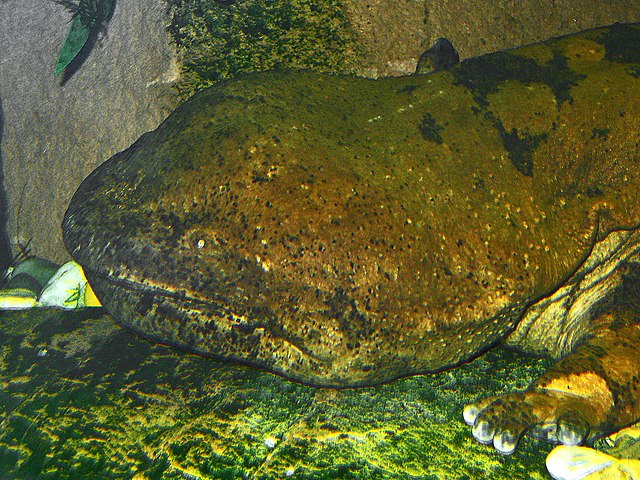The Chinese giant salamander is one of the largest salamanders and one of the largest amphibians in the world. It is fully aquatic, and is endemic to rocky mountain streams and lakes in the Yangtze river basin of central China. It has also been introduced to Kyoto Prefecture in Japan, and possibly to Taiwan. It is considered critically endangered in the wild due to habitat loss, pollution, and overcollection, as it is considered a delicacy and used in traditional Chinese medicine. On farms in central China, it is extensively farmed and sometimes bred, although many of the salamanders on the farms are caught in the wild. It has been listed as one of the top-10 "focal species" in 2008 by the Evolutionarily Distinct and Globally Endangered project.
Chinese giant salamander
A 30-year-old giant salamander in a German zoo
Chinese giant salamanders are bred in large numbers in Chinese farms, but the breeding stock (parents) have often been wild-caught
A Chinese Giant Salamander shown at the London Zoo
Salamanders are a group of amphibians typically characterized by their lizard-like appearance, with slender bodies, blunt snouts, short limbs projecting at right angles to the body, and the presence of a tail in both larvae and adults. All ten extant salamander families are grouped together under the order Urodela from the group Caudata. Salamander diversity is highest in eastern North America, especially in the Appalachian Mountains; most species are found in the Holarctic realm, with some species present in the Neotropical realm.
Salamander
X-ray image of salamander
Sirens have an eel-like appearance.
Rough-skinned newt








